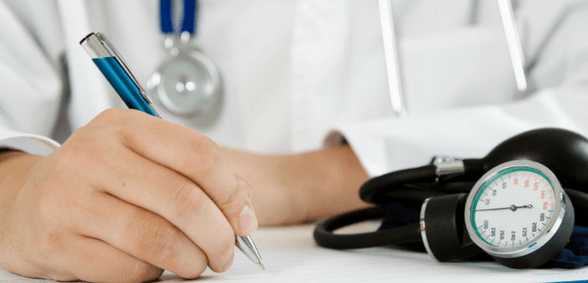
What are the merits of digital dictation in a surgery setting? What do the best devices offer busy practice managers and what kind of time and efficiency savings can be harnessed as a result? Practice Business investigates
There’s one thing I think we can all agree on: time is an entity that’s pretty scarce in the world of practice management. Whether it’s a disgruntled patient, an impending CQC inspection or a new locum with a notebook full of questions, it’s unlikely that you ever hit lunchtime with your feet up, wondering how to while away the hours until 6pm (wouldn’t that be novel?) In a busy work setting, every practice manager is after the glittering golden goose – the product that will save time and reduce costs in one fell swoop – and as ever Practice Business is here to help.
The golden goose
First off, it’s worth noting that digital dictation has been that elusive golden goose for many years now, freeing up consultants and their secretaries from the days when consultants would telephone dictate their documents to typists for transcription. Nowadays, though, digital recorders offer huge flexibility and many more benefits, as Georgina Pavelin, marketing manager at Olympus, points out. “There’s no doubt that dictation saves countless hours of valuable time and there are scalable digital dictation solutions which can be tailored to fit perfectly within your individual working environment. Dictation can provide complete workflow transparency, better utilisation of resources and optimum cost savings when used well.”
But what should you be looking for from a digital dictation device? “If the doctor’s likely to be office-based for the majority of their rime, a fixed or USB recorder would be ideal; however, if travel and flexibility is necessary between patients or sites, a portable recorder should be considered,” says Georgina.
And it goes without saying that digital dictation should always be chosen over its elderly cousin analogue dictation, as Dr Andrew Whiteley, managing director of Lexacom, points out. “The previous way of dictating using analogue is now an ageing technology and has become increasingly expensive and unreliable due to the wear and tear of tapes that can also get chewed up and recorded over,” he says. “Digital formats create much higher quality recordings without wearing out over time and users have come to rely on this improved format.”
Embedded speech recognition technology with deferred and back end technology as well as access to outsourced transcription services is also proving popular, according to Dr Whiteley. “It allows practice managers to overcome peaks in demand as well as staff shortages. If GPs have access to dedicated mobile phone applications then they’re able to work away from the practice and during a home visit, thus ensuring dictations are still flowing through the system, ready for transcription immediately,” he explains. “Plus, to manage workloads successfully for their secretarial team, the ability to oversee all referrals ensures consistent output; the ability to review referral trends is excellent for reviewing how work is being executed.”
Under lock and key
With patient data a primary concern, it’s important that any audio containing confidential or patient data is encrypted and protected. “Once this is in place the use of the audio data should be evaluated,” explains Georgina. “If there are secretaries or typists transcribing the data, clear recordings for accurate transcription is needed, as is data protection, and foot pedals and head sets. If the data is being outsourced for transcription, it’s worth checking what file types are accepted and if there is a recommended device. Finally, speech recognition can also be popular and with many options available, it’s worth requesting a trial or researching the results.”
So what kind of time savings can be harnessed with digital dictation? According to Frederik Brabant, MD, chief medical information office at Nuance Communications, recent studies have shown that clinicians spend more than 50% of their working day dealing with clinical documentation. In 27% of instances of reviewing clinical documentation, the required information isn’t available or lacks sufficient detail or clarity. “And 58% of the doctors stated their notes were likely or very likely to be more complete if there was more time to spend on them,” he explains. “Speech recognition addresses these shortfalls; a recent study showed an overall increase of 26% in documentation speed when using web-based automatic speech recognition (ASR). Participants documented an average of 356 characters per report when not assisted by ASR and 649 characters per report when assisted by ASR – a massive 82% increase overall.”
Whilst some practices seem reticent about adopting new technology, Frederik urges practice managers to remember that using front end speech recognition to dictate directly into electronic patient records is the only way to effectively meet the challenge of creating comprehensive and accurate patient records. “It also drives the productivity needed to unlock the time patients want their GPs to spend with them, rather than being embroiled in time-consuming admin.”
So – make sure you choose your provider carefully by seeking references from existing users and check that the required training and support is on hand from the provider in question. The best companies will also be able to work with practices to solve document production issues, which would include looking at the ability to offer shared working solutions across multiple sites, regardless of infrastructure. Get Googling and draw up a list of dream providers; you could be saving yourself and your team oodles of time and effort as a result!
Don’t forget to follow us on Twitter, or connect with us on LinkedIn!

Be the first to comment